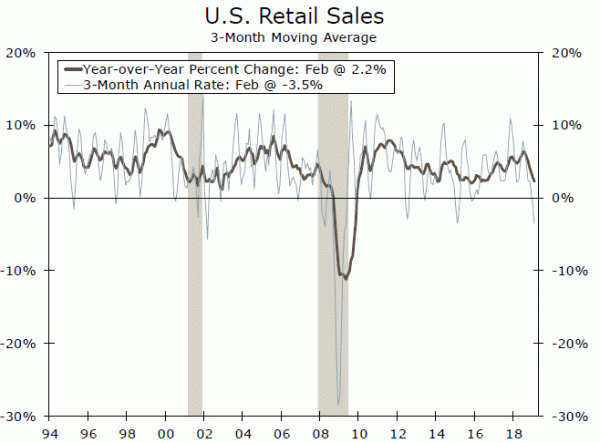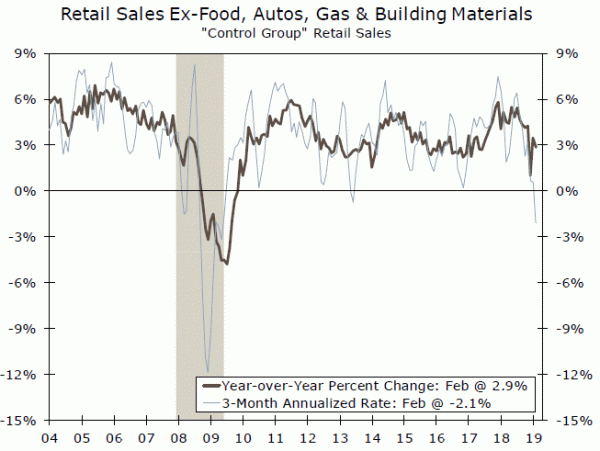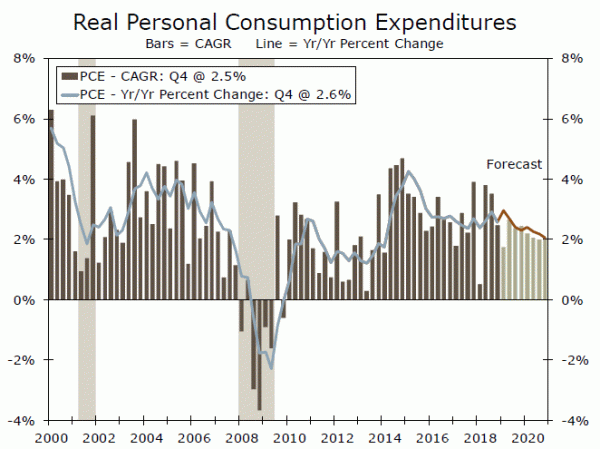A mixed report on retail sales puts the 3-month annualized rate of decline in control group sales in a spot usually associated with recession. Our take: look through recent weakness and focus on fundamentals.
February Retail Sales Slip; January Better than First Thought
Retail sales fell 0.2% in February, but that comes on the heels of a revision, which more than tripled the first estimate for sales growth in January. There were few categories that saw increased sales in February. Gas stations saw a modest pick-up, though that likely is just a reflection of higher prices at the pump. Auto sales and online sales were higher as well, but most other categories were in the red to varying degrees.
The control group, which feeds into estimates for personal consumption expenditures in the GDP report, fell 0.2% in February. But evidence of the upward revision to January were evident here as well, lifting the increase in January control group sales to 1.7%—the biggest one-month pop in 17 years. Still, if you look at the middle chart, in the past 15 years we have not seen the 3-month annualized rate go this far into negative territory outside of a recession.
The retail sales numbers have been extraordinarily choppy in recent months and the government shutdown occurred right in the middle of what appears to be an inflection point for the consumer. We may not be flying blind, but this may be a time when you discount the official data. The significant revisions in the data offer some justification for that approach recently.
So which is it? Are we just in a soft patch or is this the beginning of a more worrying retrenchment in consumer spending? Our sense is that this weakness is temporary. By a number of metrics, the job market is as good as it has been since the turn of the century. The stock market, while certainly jittery, is just a few percentage points from all-time highs, which has lifted household wealth considerably over the past decade. These are not the conditions we would look for to identify a sustained retrenchment in consumer spending.
There are many potential culprits for the recent weakness: the government shutdown which spooked financial markets, the polar vortex which kept consumers indoors and the timing and size of tax refunds. All of these factors are already fading, and we are on the record as saying that tax refunds may be later, but won’t be meaningfully different from prior years.
None of this is to say that we see the consumer through rose-colored glasses. We do worry about student loan debt and the long term albatross that will be for a generation of U.S. consumers. We do expect a slowing in the pace of personal consumption growth as the business cycle ages. But, the softness indicated by last week’s personal income and spending report and corroborated today by this mostly negative retail sales report overstates the weakness, and we expect both confidence and sales to rebound in a more meaningful way as the year progresses.















